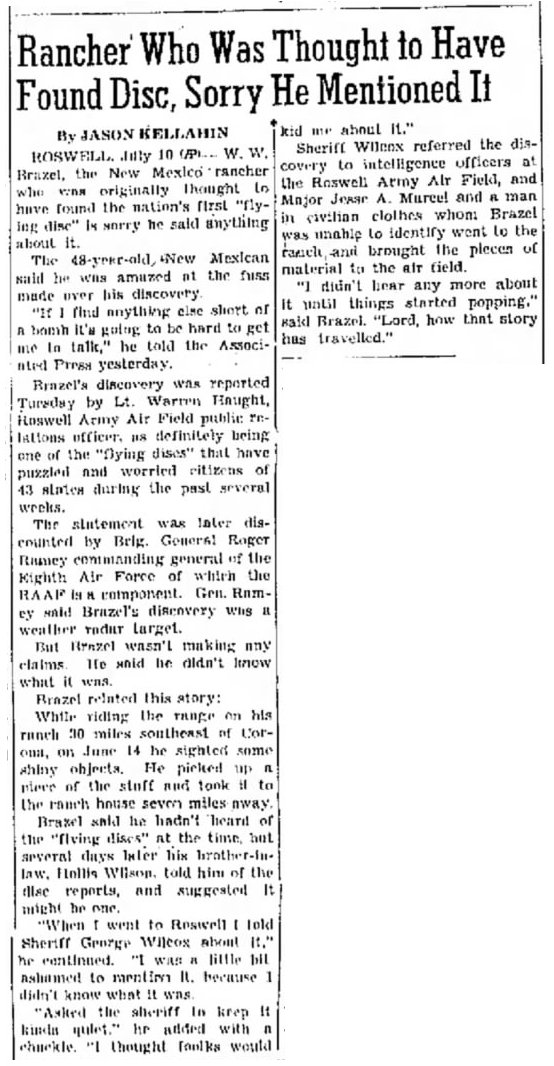
The article below was published in the daily newspaper The Las Cruces Sun-News, Las Cruces, New Mexico, USA, page 2, on July 10, 1947.

|
ROSWELL, July 10 -- (AP) -- W. W. Brazel, the New Mexico rancher who was originally thoughtto have found the nation's first "flying disc" is sorry he said anything about it.
The 48-year-old New Mexican said he was amazed at the fuss made over his discovery.
"If I find anything else short of a bomb it's going to be hard to get me to talk," he told the Associated Press yesterday.
Brazel's discovery was reported Tuesday by Lt. Warren [sic, Walter] Haught [sic, Haut], Roswell Army Air Field public relations officer, as definitely being one of the "flying discs" that have puzzled and worried citizens of 43 states in the past several weeks.
The statement was later discounted by Brig. Gen. Roger Ramey, commanding general of the Eight Air Force of which RAAF is a component. Gen. Ramey said Brazel's was a weather radar target.
But Brazel wasn't making any claims. He said he didn't know what it was.
Brazel related this story:
While riding the range on his ranch 30 miles southeast of Corona, N. M., on June 14, he sighted some shiny objects. He picked up a piece of the stuff and took it to the ranch house seven miles away.
Brazel said he hadn't heard of the "flying discs" at the time, but several days later, his brother-in-law, Hollis Wilson, told him of the disc reports, and suggested it might be one.
"When I went to Roswell I told Sheriff George Wilcox about it," he continued. "I was a little bit ashamed to mention it, because I didn't know what it was.
"Asked the sheriff to keep it kinda quiet," he added with a chuckle. "I thought folks would kid me about it."
Sheriff Wilcox referred the discovery to intelligence officers at the Roswell Field. Maj. Jesse A. Marcel and a man in civilian clothes whom Brazel was unable to identify went to the ranch and brought the pieces of material to the air field.
"I didn't hear any more about it until the things started popping," said Brazel. "Lord, how that story has traveled."
This article had a more detailed version published in another newspaper the next day, including a description of the debris.